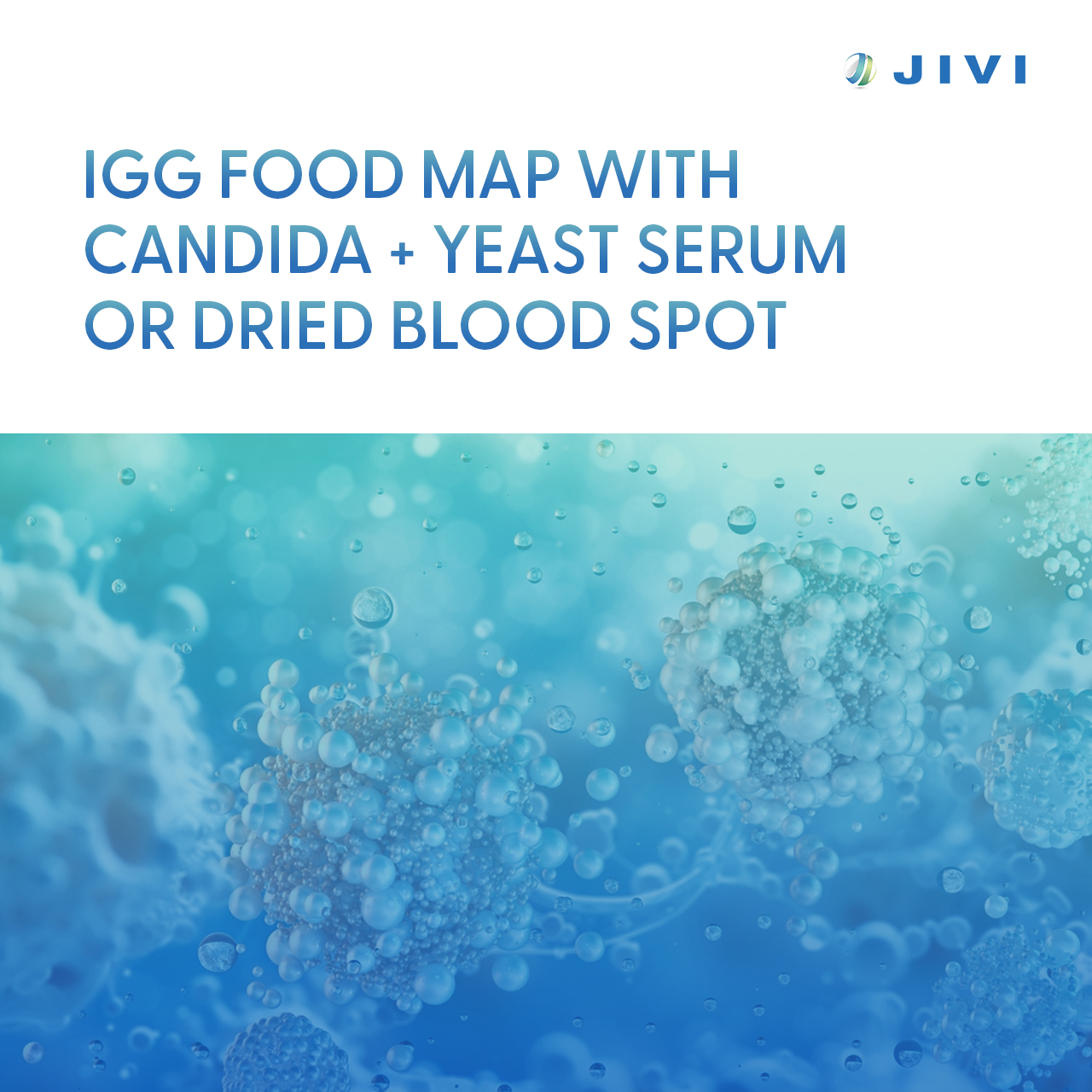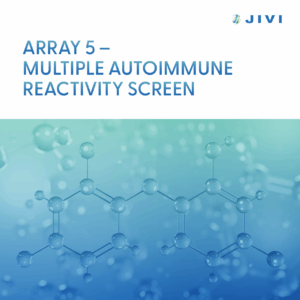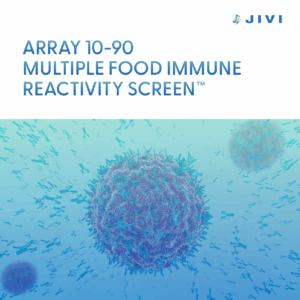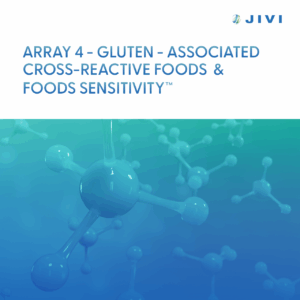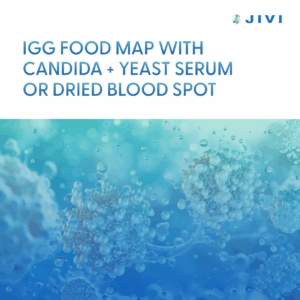Description
IgG Food MAP with Candida + Yeast – Serum or Dried Blood Spot
What does this test measure?
This blood test, which can be done using serum or a dried blood spot, measures IgG antibodies against a wide range of approximately 190 food antigens, as well as common yeasts such as Candida albicans and brewer’s yeast (Saccharomyces). Unlike IgE allergies that trigger immediate reactions, IgG food reactions are classified as delayed hypersensitivities. These reactions may contribute to chronic symptoms like digestive issues, migraines, and skin conditions such as eczema, although this view remains somewhat controversial in mainstream medicine.
The inclusion of Candida and yeast IgG levels helps determine if the immune system has an elevated response, which might indicate yeast overgrowth in the gut. The purpose of this test is to identify foods that provoke an immune response (via IgG) that could lead to low-grade inflammation in the body.
Who is this test most suitable for?
People with diets heavy in certain foods (e.g. daily dairy or wheat – might develop IgG to those); Individuals who suspect foods cause them issues but can’t pinpoint which (this test can give clues); Chronic illness patients experimenting with elimination diets; Those following gut-healing regimens (like leaky gut protocols) to see what to eliminate.
Clinical Use
Clinically, practitioners use these results to tailor elimination diets – for example, if someone has high IgG to dairy, gluten, and eggs, they might remove those foods for a period to see if symptoms improve. The yeast IgG part helps indicate if antifungal treatment might be needed. This test is often used in integrative and naturopathic practice for patients with IBS, migraines, fibromyalgia, autism, ADHD, skin rashes, joint inflammation, etc. where an underlying food sensitivity is suspected. It provides a personalized list of reactive foods (graded by antibody levels) to guide dietary changes.


